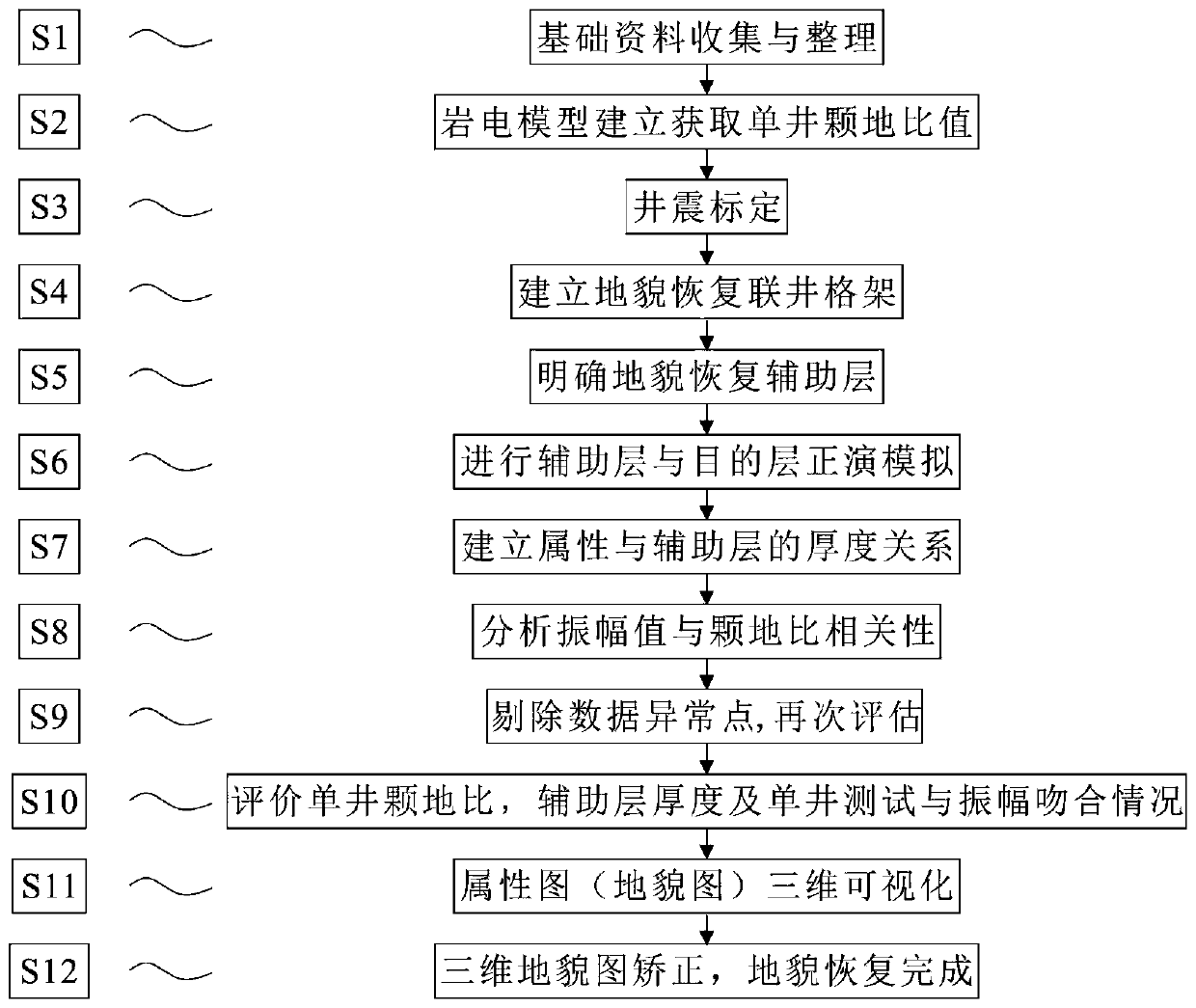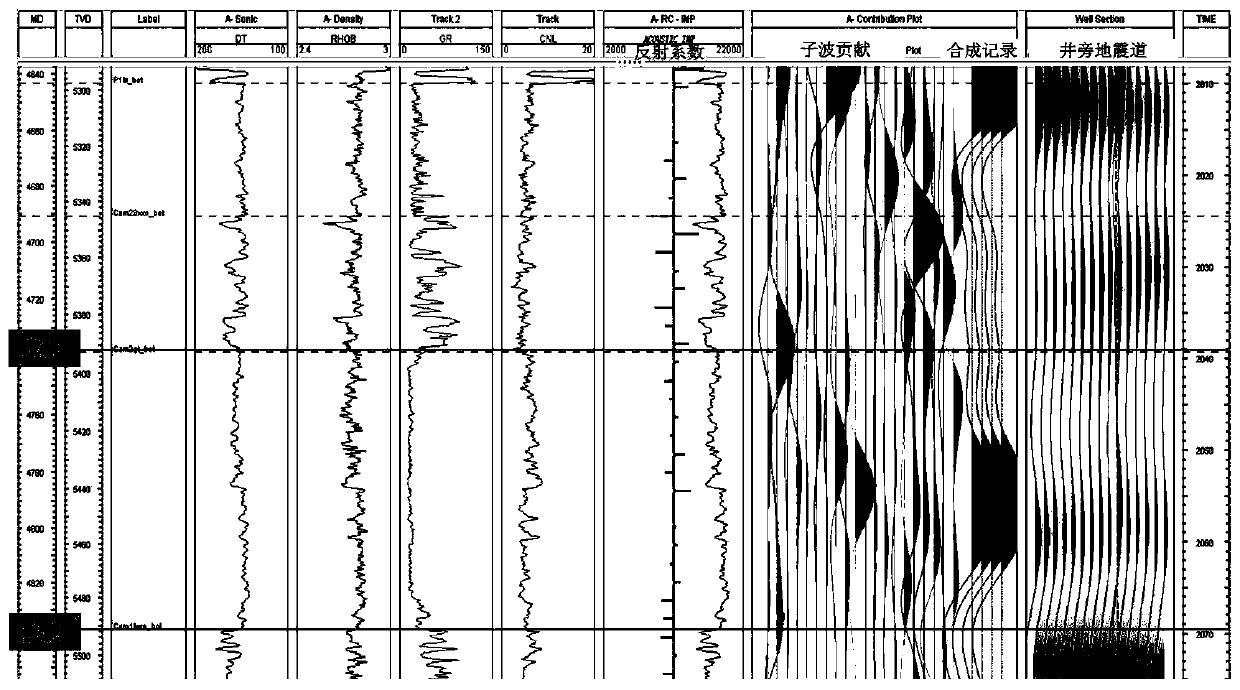Palaeogeomorphology restoration method in sedimentary period based on seismic reflection amplitude analysis
A technology of paleogeomorphology restoration and seismic reflection, which is applied in the fields of seismology, seismology, and seismic signal processing for well logging records, can solve the problem of increasing well-seismic calibration phase difference, failure to obtain paleogeomorphology restoration results, and recovery There is a large difference between the result and the actual drilling, so as to reduce the workload
- Summary
- Abstract
- Description
- Claims
- Application Information
AI Technical Summary
Problems solved by technology
Method used
Image
Examples
Embodiment Construction
[0035] In order to make the object, technical solution and advantages of the present invention clearer, the present invention will be further described in detail below with reference to the accompanying drawings and examples.
[0036] Such as figure 1 As shown in , a method for restoring paleogeomorphology in sedimentary period based on seismic reflection amplitude analysis includes the following steps:
[0037] S1. Basic data collection: collect post-stack migration seismic bodies, conventional logging curves, drilling and logging data, well deviation data, coring data, layered data, seismic interpretation horizons, single well test productivity data and Regional geology and other information.
[0038] S2. Use the single well GR logging curve after normalization processing to determine the threshold value of grain rock GR through core calibration, and combine the coring data and logging interpretation results to classify grain rock formations and non-grain rock formations. ...
PUM
 Login to View More
Login to View More Abstract
Description
Claims
Application Information
 Login to View More
Login to View More - R&D
- Intellectual Property
- Life Sciences
- Materials
- Tech Scout
- Unparalleled Data Quality
- Higher Quality Content
- 60% Fewer Hallucinations
Browse by: Latest US Patents, China's latest patents, Technical Efficacy Thesaurus, Application Domain, Technology Topic, Popular Technical Reports.
© 2025 PatSnap. All rights reserved.Legal|Privacy policy|Modern Slavery Act Transparency Statement|Sitemap|About US| Contact US: help@patsnap.com



